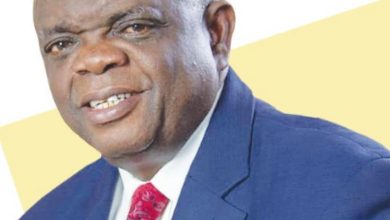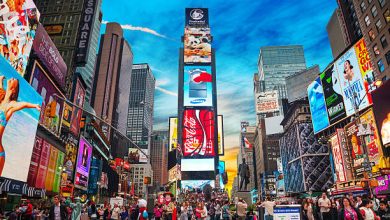How OOH can help brands with consumer insights in today’s market environment


With the market focusing on reviving the losses of last year and mobility being on the rise, the focus on agile innovations has become key to stay ahead. Consumers have evolved and so have their purchasing patterns. Brands need to adapt to the evolving demand curve to instill a call-to-action and survive in this new market environment.
OOH is a medium that is present at all major consumer purchase points and now with technological advancements, DOOH mediums can even track consumer’s behaviour patterns. Billboards are a crucial touchpoint that empowers marketers to engage with consumers in a more personalized manner and the best medium to garner consumer insights from.
OR spoke to industry players to understand the insights OOH companies have garnered about the change in consumer behaviour and how brands can amplify their campaign creatives to adapt to the new market environment.
Location-based data
According to Tosan Omagbemi, CEO, Interaction Channel, location-based data is very important, especially in today’s uncertain mobility scenario. Omagbemi explains, “When we look at the IoT movement and media selection, we take into consideration the key touchpoints basis the consumer classification. Today, we are also able to provide location level reach and frequency along with impressions. All this helps make OOH measurable. Also, OOH today is beyond traditional static media. Location level data is very important when we are planning experiential activities and innovations as it helps ensure higher footfalls and participation.”
He further said, “Location and contextual data make OOH ads relatable to the viewing audience. Merging signals from around the audience environment with contextually relevant dynamic ads has a far-reaching impact on the consumer. Studies have shown an increase in brain responses (as high as 32%) to OOH ads when strategically combining relevant moments (context) and content.”
Localization is key for OOH. Brands have long used the situational context of an OOH asset as part of the creative. Marketers can now harness a vast range of data to contextualize OOH copy. There’s location data, and third party data such as weather, social, transit, and news, plus brand-owned data including pricing, stock levels, and retail stores. Through these layers of data, we can exploit the context effect providing dynamic, data-driven, and locally relevant information throughout the customer journey.
A recent study showed that advertising in premium environments had a stronger ad recall of +19.2% higher, +10.5% in brand awareness, and +9.7% in brand perception. OOH has several inherent advantages in this regard: broad reach, visual impact, and capacity to incorporate local context into creativity, which make it a strong medium for long-term brand-building.”
Acceleration of DOOH
Omagbemi commented, “Accelerating the process to digital OOH as digital has now become the need of the hour. How can DOOH help with auto-scheduling campaigns and other benefactors? DOOH screens are now increasing across destinations and with the connectivity of its media increasing, we can execute pDOOH campaigns. We have already been working with clients on programmatic DOOH. With pDOOH, we can have dynamic creative changes and also run DOOH campaigns based on various triggers.”
Omagbemi says, “DOOH offers auto-scheduling of ads as a default advantage. There’s little novelty left there. However, the game-changer, in my opinion, is Data synced ad scheduling that leverages the impact of DOOH ads. What I mean by this is that DOOH ad scheduling should be real-time, dynamic, and most importantly data-driven which is now attainable using programmatic technology in DOOH. Data synced ad scheduling is both innovative and targeted giving brands that extra mileage in delivering ads just at the right moment when it matters the most.”
Some brands have used this strategy for many campaigns. He added, “Time and time again research has shown that contextual and relevant creative cuts through and makes an impact with audiences. Digital OOH provides us with a great opportunity to deliver contextual messages that hit home. Now with DOOH, brands can use a technique called ‘targeted broadcast’ to reach groups of specific people, rather than individuals, using the dynamic capabilities of the medium to adjust copy and creatives in real-time.”
He highlighted that the reality is, we might all be talking about it, but when it comes to harnessing the power of data in the DOOH environment, good examples are still relatively light on the ground. He added, “Most campaigns remain one-dimensional, few have leveraged brand-owned data or used different datasets to target different touchpoints during the customer journey. There is definite room for growth here. Sadly, campaigns of this type are still in minority with the latest figures suggesting dynamic campaigns are less than 10 per cent of all digital OOH. DOOH could be doing so much more.”
Geofencing
Omagbemi shared his views: “There are various technologies in OOH for geofencing which can lead to creating a robust call to action network. With these technologies, we can not only target the consumers but also after a specific action completion retarget them through the consumer journey and provide relevant experience and communication. This can influence call-to-action. We have seen a very effective usage of this in a few of our campaigns for various retail clients in the past where, with geo-fencing, we could calculate the consumer impressions and influence action.”
Talking about how brands can use geofencing Omagbemi says, “Geo-Fencing as a concept has been exhaustively used in Mobile advertising targeting users in a certain geography to take notice of the ad. Taking this same concept on DOOH screens offers brands the opportunity to prime users and influence them subtly to take some form of action such as visiting a store or restaurant etc. Geo-fencing when teamed with directional ads or offer-based ads boost the overall actions taken. This concept can be used to run hyperlocal campaigns customizing ads and messaging to suit the audience type in a certain location.”
Omagbemi talking about the prominence of geofencing noted, “Using geo-fencing insights coupled with behavioural data, mobile helps amplify the Out-of-Home campaign to further an advertiser’s campaign reach. It allows brands to continue the conversation by delivering mobile advertising banners to your target audience when they are within a defined geofence or proximity of your OOH placements and while they are using an ad-supported app or browsing the web on their phone.”
Omagbemi concluded by saying that his company is working on this equation: “Mobile+OOH= Effective ROI”. He stated, “Our team of experts has developed a platform that can access mobile device data to allow geofenced targeting that delivers the right exposures to devices coordinated with out-of-home screens. The measurement then tells buyers and planners how those exposures fit within the campaign making them more effective as they amplify and enhance messaging rather than risking mismatching creative or inappropriate frequencies.”






